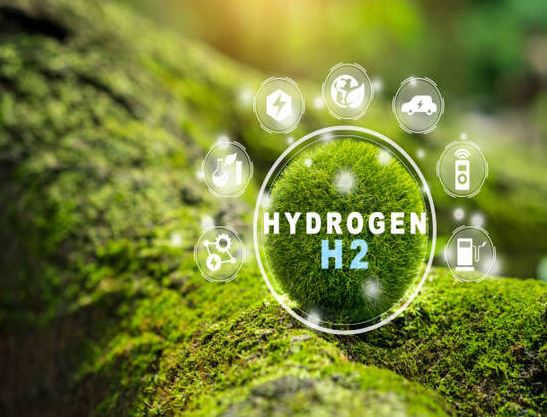18 November 2024
The global shift towards cleaner energy is accelerating, with green hydrogen (GH2) emerging as a pivotal technology for energy storage and grid stabilisation. As renewable sources like solar and wind power become increasingly integrated into energy grids across the Asia-Pacific region and beyond, the need for efficient and reliable energy storage solutions is paramount. Green hydrogen, produced through electrolysis powered by renewable energy, offers a compelling solution, promising to revolutionise energy grids, significantly reduce carbon emissions, and pave the way for a sustainable energy future.
The hydrogen energy storage market is experiencing significant growth. Valued at USD 17.1 billion in 2023, it is projected to expand at a compound annual growth rate (CAGR) of 8.4% from 2024 to 2032. Hydrogen's storage versatility â gaseous, liquid, and solid â allows it to cater to diverse applications and consumption needs, with the chosen method influenced by factors such as transportation requirements and end-use specifications.
Storage Methods: A Comparative Overview
Compression storage, projected to grow at a 7% CAGR until 2032, is benefiting from advancements like cryogenic compression, enhancing efficiency and reducing energy demands. This method improves delivery options, driving its adoption. Gaseous state storage, the dominant method in recent years due to lower costs, is also expected to grow at a 7% CAGR through 2032. High-pressure tanks (350â700 bar) make it a cost-effective choice, particularly for industrial applications, leveraging existing infrastructure. Solid-state storage, which held over 50% of the market revenue share in 2023, utilises absorption or adsorption techniques. Liquid hydrogen storage, while limited to niche applications like space travel, plays a role in high-tech and bulk storage scenarios.
Asia-Pacific: A Leading Force in Green Hydrogen
The Asia-Pacific region is currently leading the global hydrogen energy storage market, reaching a market size of USD 8 billion in 2022. Countries such as Australia, India, China, and Japan, collectively held over 37.48% of the revenue share in 2023. Significant government investment in clean energy technologies, coupled with ambitious plans to establish hydrogen supply chains for power generation and international trade (notably in Australia, Japan, and Korea), are driving this growth. The industrial application segment dominated the market in 2022, exceeding USD 10 billion in revenue, highlighting the crucial role of hydrogen in meeting the feedstock demands of sectors like fertiliser and chemical production. This trend is further fuelled by rapid industrialisation in developing nations and the increasing adoption of alternative energy sources to reduce greenhouse gas emissions.
Green Hydrogen: Grid Stabilisation and Beyond
A key advantage of green hydrogen lies in its ability to act as a grid stabiliser. Excess renewable energy generated during periods of low demand can be used to produce hydrogen via electrolysis. This stored hydrogen can then be converted back into electricity via fuel cells during peak demand, or used directly as fuel. Unlike batteries with limited discharge times, hydrogen can store energy for extended periods without significant loss, making it essential for grid balancing and deeper renewable energy integration.
Green hydrogenâs applications extend beyond grid stabilisation:
Transportation: Hydrogen-powered vehicles and vessels offer zero-emission alternatives for long-haul transport, as evidenced by the development of hydrogen-fuelled ferries in Norway and Japan.
Industrial Processes: Decarbonising sectors like iron and steel, and chemicals manufacturing, relies heavily on hydrogen.
Residential and Commercial Applications: Initiatives like Japan's ENE-FARM program promote hydrogen fuel cells for residential micro-combined heat and power (micro-CHP) systems.
Challenges and Opportunities
Despite its potential, several challenges remain: distribution issues, particularly in developing nations; high capital costs associated with large-scale infrastructure development; and safety concerns related to high-pressure hydrogen storage and transportation. Recent setbacks, such as Origin Energy's withdrawal from a large-scale Australian green hydrogen project, highlight the hurdles to widespread adoption.
The Path Forward: Global Policy and Investment
Governments are increasingly recognising the importance of green hydrogen, setting ambitious targets and implementing supportive policies. India's commitment to net-zero emissions by 2070, along with similar initiatives worldwide, is crucial for accelerating infrastructure development and stimulating demand. The introduction of incentives and subsidies will further support market growth.
In conclusion, green hydrogen represents a transformative technology with the potential to revolutionise energy grids and accelerate the transition to a sustainable future. While challenges remain, ongoing investment, supportive policies, and technological advancements are paving the way for its wider adoption across the Asia-Pacific region and globally. The successful integration of green hydrogen will be vital in creating a resilient, reliable, and cleaner energy system for generations to come.

